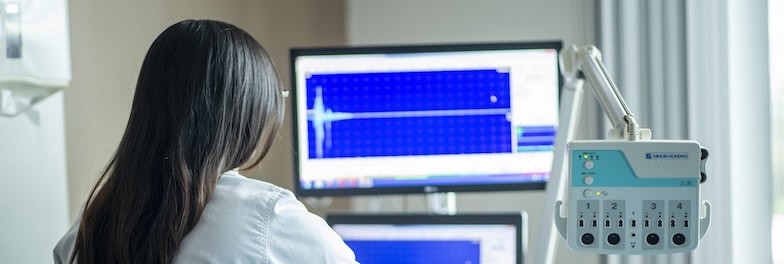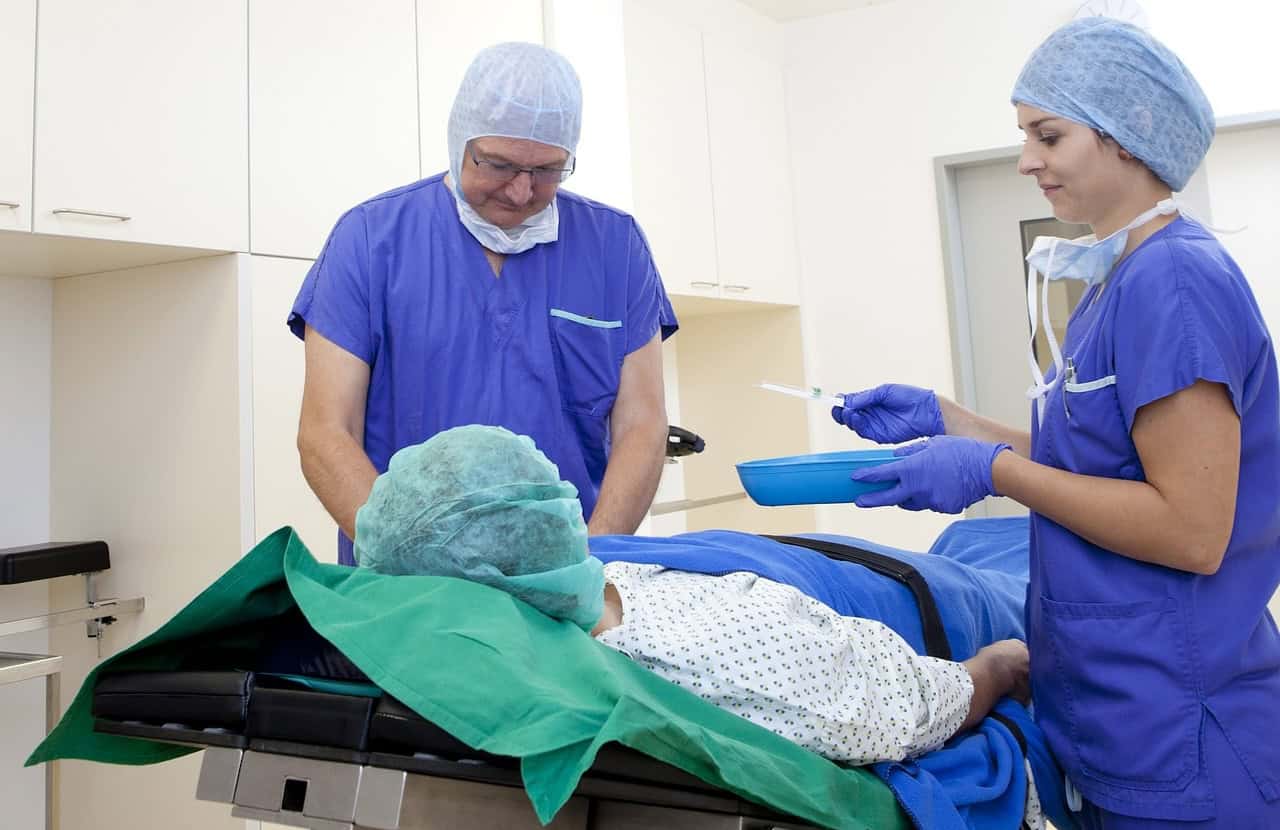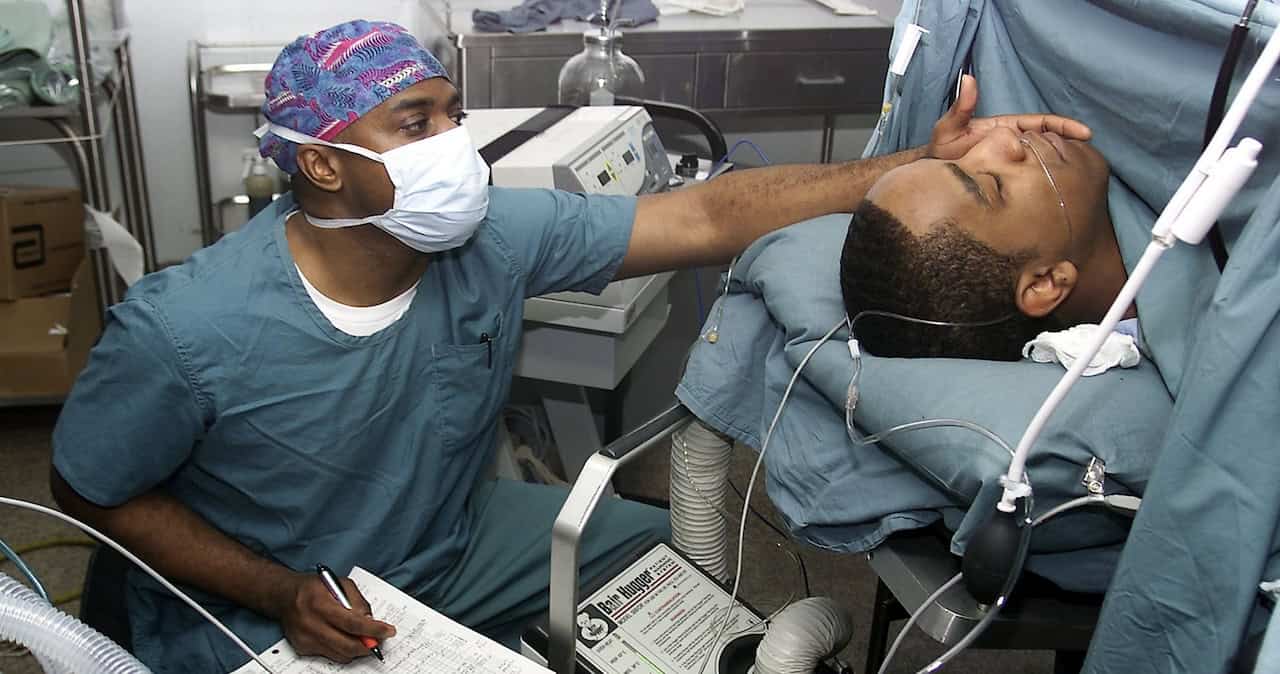Expert Explainer: How Long Is A Medical Degree In North America

Becoming a medical doctor in North America is a lengthy process. Whether you’re a local or international student, every step counts from finishing high school to completing your medical specialisation. Across the regions that make up North America, there are variables to programmes, entry requirements, and duration. To help you understand everything there is to know, this is a comprehensive guide to countries, programme structure, licensing, tuition fees, and the benefits of choosing North America!
Table of Contents
- Where in North America Can You Study a Medical Degree?
- How are Medical Degree Programmes Structured in North America?
- How do Other International Medical Education Regions Compare To North America?
- Are all North American Medical Degrees Recognised in the UK and Europe?
- Does Licensing Affect how long a Medical Degree is in North America?
- What Makes North America’s Medical Schools a Good Choice for UK and International Students?
Where in North America Can You Study a Medical Degree?
There are three major sub-regions for medical education in North America: the U.S., Canada, and the Caribbean. All three offer high-quality routes with distinct programmes that qualify graduates with a medical degree. Only the Caribbean offers undergraduate medicine programmes including a preclinical year; the Caribbean, U.S., and Canada all offer graduate medicine programmes.
The journey of becoming a doctor in North America is extensive, and usually split into two phases: Preclinical years for the first two to three years; and Clinical years for the final two to three years. During the pre-clinical phase of classroom-based learning, students study basic medical sciences with theoretical modules of Anatomy, Physiology and Pharmacology. Then in the clinical phase, students proceed to practical training in hospitals and clinics that develops clinical skills and builds on theoretical modules. Although the medical programme structure in Canada and the U.S., course lengths and content differ between both countries. The same applies with Caribbean medical programmes that have differing programme durations and entry requirements. Despite there being some noteworthy differences with the Caribbean-North American region, each university’s curriculum is developed in line with leading U.S. schools and students graduate with an internationally-recognised Doctor of Medicine (MD) qualification.
The medical education systems between the U.S. and Canada are very similar, as students need to complete an undergraduate degree before applying for any medical schools. Therefore it’s simplest to refer to the U.S. and Canadian offerings as graduate programmes. These programmes are typically four years and you’ll graduate with an MD degree. Between the U.S. and Canada, leading schools are located in Boston and Toronto.
In comparison, the Caribbean offers an alternative for students seeking to pursue a medical degree with both undergraduate and graduate-entry programmes available. Both the 5-year or 5.5-year undergraduate programme and the 4-year graduate programmes in Anguilla, Antigua, St. Vincent and the Grenadines, and Barbados offer an MD qualification. The Caribbean schools are particularly known for offering pathways for international students taught in English.
It’s very important for international medical students to choose a school that’s accredited and listed by the World Directory of Medical Schools. This guarantees that graduates have an internationally-recognised degree and can pursue registration and licensing to work in high-demand regions like the U.S., Canada, the UK, Ireland, and Australia.

How are Medical Degree Programmes Structured in North America?
Medical degree programmes across North America share similarities in structure but vary slightly depending on the region and medical school. As outlined above, the standard programme structure includes a pre-clinical phase (focused on classroom learning), then a clinical phase (hands-on training in hospitals).
Although recognised medical degrees offer students a global medicine qualification, graduates must still meet specific licensing requirements depending on where they wish to practice. For example, in the U.S. and Canada, graduates must pass exams like the USMLE or MCCQE for medical licensing. Similarly, those seeking to work in the UK must comply with the General Medical Council’s regulations. Each country has unique licensing exams and requirements to ensure proper qualification for practice before you begin your international medicine career.
What is the Medical Degree Programme Structure in the U.S.
In the U.S., medical degrees are typically studied at the graduate level. Specifically, this means that students complete a compulsory 4-year undergraduate degree in any field before studying the 4-year graduate medicine degree.
During their four-year undergraduate degree, you should typically concentrate on the “pre-medicine” route of science studies in order to apply for medical school. Once accepted, medical school lasts four years. The standard U.S. structure is two years in the classroom – the pre-clinical years; then, the final two years cover clinical studies covers foundation rotations in core medical areas and finally elective rotations in the more specialist areas.
Most medical schools start in August or September. Programme applications for the following year’s intake close a year ahead of time through the AMCAS system. Basic requirements for U.S. programmes are: a Bachelor’s Degree (typically in science or related field), high GPA, competitive MCAT scores, and demonstrated experience working in healthcare.
Following medical school graduation, U.S. students are awarded an MD degree; around one-fifth of U.S. students study at Osteopathic Medical Schools and receive a Doctor of Osteopathic Medicine (DO) degree. After medical school, graduates must enter residency training for a specialty.
The average cost for U.S. medical schools ranges from $200,000 to $300,000 for the entire programme, depending on whether it’s a public or private institution.
What is the Medical Degree Programme Structure in Canada
In Canada, medical programmes are primarily graduate-entry, though a few schools offer direct-entry undergraduate programmes for high school graduates. Most students, however, must first complete a Bachelor’s Degree, typically in a science-related field, before applying to medical school. This is a core similarity medical schools between Canada and the U.S.
Canadian universities’ graduate medicine programmes predominantly last four years. Just like both the U.S. and the Caribbean Islands’ graduate programmes, the curriculum is structured into preclinical and clinical studies. For the first two years, students study Basic Sciences to build preclinical competencies; then, for the final two years, students progress to Clinical Sciences that predominantly involve clinical rotations in hospitals and clinics.
The intake calendar for Canadian medical schools usually starts in August or September. Your application must be submitted through the Ontario Medical School Application Service (OMSAS) or directly to other schools around a year in advance.
To apply, students need a Bachelor’s Degree, competitive GPA, MCAT scores, and healthcare-related experience. Graduates from Canadian programmes receive a Doctor of Medicine (MD) degree and then must complete a residency program in a specialty.
The cost of medical school in Canada averages around $60,000 to $100,000 for the entire programme. Unlike the U.S. and the Caribbean regions, fees are typically lower for in-province students at public universities.
What is the Medical Degree Programme Structure in the Caribbean
In the Caribbean, medical schools offer both undergraduate and graduate-entry programmes.
Leading sub-region universities for medicine in the Caribbean are:
- New Anglia University, Anguilla
- University of Health Sciences Antigua, Antigua and Barbuda
- Saint James School of Medicine, St. Vincent and the Grenadines
- Victoria University of Barbados, Barbados
5-year or 5.5-year undergraduate programmes allow students to start medical training directly after high school. 4-year graduate-entry programmes are for students who already hold a science-related Bachelor’s Degree and are very similar to U.S. and Canadian models. Both undergraduate and graduate programmes are developed to have a curriculum structure that’s consistent with U.S. medical schools.
Usually Caribbean medical schools have intakes per year in January, May and September and applications take place around 6 to 12 months before the new academic year begins. Another key difference is that the admissions process is predominantly application-based with no interviews or entry exams. In contrast, Caribbean medical school entry is based on applications that must include a high school diploma for undergraduate programmes or a Bachelor´s Degree related to sciences for graduate programmes and scores on MCAT (graduate) — depending on the institution. Graduates from undergraduate and graduate programmes are awarded an MD degree.
On the whole, the Caribbean is a fast-growing region for international students pursuing a global medical education. For the most part, admissions policies focus heavily on high quality, comprehensive applications and are more inclusive than leading English-language universities in the UK and the U.S. Caribbean schools are accredited and thousands of graduates practice medicine internationally.
Total tuition costs are $35,000 to $150,000 for an undergraduate or graduate programme, depending on the institution and length of study.

How Long does it take to Qualify for a Medical Degree in North America Compared to the UK and Europe?
In North America, medical degrees are generally longer compared to the UK and Europe. Even so, there are variations across the greater North American region.
In particular, Caribbean undergraduate medicine programmes are around the same length as UK programmes. Because U.S. and Canadian schools largely only offer graduate medicine programmes, students typically complete a science-related 4-year undergraduate degree before applying to medical school. Then, four more years of graduate-level medical school training . This means the entire U.S. and Canadian process – including undergraduate degrees – takes about eight years before entering residency training. In contrast, some Caribbean schools offer both undergraduate and graduate entry options, with programmes lasting from four to six years depending on prior education. In the case of students studying a graduate programme, their total study time including undergraduate studies is in line with the U.S. and Canadian medical schools.
Medical education is faster in the UK. For the most part, undergraduate medicine programmes are widely offered and range from five to six years. There are also 4-year graduate-entry programmes offered to students who have already graduated from a science-related programme. The usual intake calendar for UK medical schools is in September, and applications are through UCAS the year before.
When you compare Europe with North America, there are too many differences in medical education to make a standardised comparison of all medical programmes. Presently, European countries, similar to the UK, have undergraduate entry programmes of five or six years open to high school graduates. Some countries, including Ireland and the Netherlands, also have 4-year graduate-entry programmes. Most universities follow a September or October academic calendar and the admissions process takes place the year prior to the programme beginning.
In the UK and Europe, entry requirements are based on the programme. For undergraduates, students will need to have high school qualifications including certain A-Levels or the country’s equivalent. For graduates, students must hold a science-related Bachelor’s Degree and submit their tertiary academic transcripts; on occasion the university may refer to their A-Levels (or equivalent). To apply in both regions, students will need to submit application documents with academic transcripts as well as possibly needing to pass national exams, entry exams in Biology and Chemistry, English-language tests, or other university specific requirements.
UK and European graduates are qualified with an MBBS (Bachelor of Medicine Bachelor of Surgery) or an MD.
Overall medical school tuition fees also vary across the UK and European universities versus those in the U.S., Canada, and the Caribbean. Furthermore medical school tuition fees can vary widely and there’s no set averages. For the UK, fees are in the range of $6,500-$65,000, and, and, throughout Europe, fees are in the range of $4,500-$32,500. In comparison to the average for the U.S. and Canada, UK and European programmes are more or less in line with Caribbean medical school fees. You may also find that some Caribbean medical schools have lower annual tuition fees than UK and European medical schools.

How do Other International Medical Education Regions Compare To North America?
In this section we’ll review other common regions for international students seeking a global medical school education like you.
How do Australia and New Zealand Medical Schools Compare To North America?
Both undergraduate and graduate-entry medical programmes are available in the Oceania region of Australia & New Zealand.
Undergraduate programmes – for students entering directly from high school – are four or five years in length. Graduate entry is a 4-year programme for students who hold a science-related Bachelor’s Degree.
The applications process begins one year ahead of the standard annual intake for programmes in February or March. In Australia, students apply through the University Admission Centre (UAC) or Graduate Entry Medical School Admissions System (GEMSAS). In New Zealand, students apply to programmes at the University of Auckland or University of Otago. Students graduate from Australasian medical schools with a Bachelor of Medicine, Bachelor of Surgery (MBBS), or Doctorate in Medicine.
Australian and New Zealand annual medical school fees range from $40,000 to $80,000.
How do Medical Schools in Asia Compare To North America?
On the whole, medical education varies greatly across Asia from South Asia through to East Asia.
Leading Asian regions are China, India, Japan, and Singapore.
Firstly, in India, Japan, and, China, medical studies begin at undergraduate level, studying a five to six-year programme. Graduate-entry programmes are not as common in these countries. Secondly, in Singapore, both 5-year undergraduate and 4-year graduate medicine pathways are offered.
Across Asia, entry requirements usually include high school qualifications or a science-related Bachelor’s Degree, depending on the programme type. Additionally, students may need to sit entry exams like the NEET in India and other university-specific entrance tests. Generally programme intakes are usually in April and September.
Similarly to Europe, annual programme costs for medical school in Asia can vary widely, starting at $5,000 through to $20,000. You’ll find that the fee structure trend depends on the country and the medical school’s fees.
| Region | Country | Undergraduate Programme | Graduate Programme | Annual Fees | Standard Entry Requirements |
|---|---|---|---|---|---|
| North America | The U.S. | N/A | 4-Year Graduate Programme | From $50,000 | Bachelor’s Degree (Graduate Medicine) + University Requirements |
| North America | Canada | N/A | 4-Year Graduate Programme | From $15,000 | Bachelor’s Degree (Graduate Medicine) + University Requirements |
| North America | Caribbean | 5-Year and 5.5-Year Undergraduate Programme | 4-Year Graduate Programme | From $6,950 | Bachelor’s Degree (Graduate Medicine) + University Requirements |
| UK | England, Scotland, Wales | 6-Year Undergraduate Programme | 4-Year Graduate Programme | From $6,500 | A-Levels or Bachelor’s Degree (Graduate Medicine) + University Requirements (incl. Biology & Chemistry exams) |
| Europe | Greece, Bulgaria, Serbia, Georgia, Romania, Armenia | 6-Year Undergraduate Programme | 4-Year Graduate Programme | From $4,500 | A-Levels (equivalent) or Bachelor’s Degree (Graduate Medicine) + University Requirements (incl. Biology & Chemistry exams) |
| Oceania | Australia and New Zealand | 5-Year and 6-Year Undergraduate Programme | 4-Year Graduate Programme | From $40,000 | A-Levels (equivalent) or Bachelor’s Degree (Graduate Medicine) + University Requirements (incl. Biology & Chemistry exams) |
| Asia | China, India, Japan | 5-Year and 6-Year Undergraduate Programme | N/A | From $5,000 | A-Levels (equivalent) or Bachelor’s Degree (Graduate Medicine) + University Requirements (incl. Biology & Chemistry exams) |
| Asia | Singapore | 5-Year Undergraduate Programme | 4-Year Graduate Programme | From $5,000 | A-Levels (equivalent) or Bachelor’s Degree (Graduate Medicine) + University Requirements (incl. Biology & Chemistry exams) |
Are all North American Medical Degrees Recognised in the UK and Europe?
In North America, medical schools are accredited by recognised bodies to ensure high standards in education and training.
In the U.S., the Liaison Committee on Medical Education (LCME) accredits MD programs, while the American Osteopathic Association (AOA) oversees DO programs.
In Canada, the Committee on Accreditation of Canadian Medical Schools (CACMS) is responsible for accrediting MD programs. Canadian accreditation ensures that the curriculum, faculty qualifications, facilities, and clinical training meet established educational standards.
In the Caribbean, the Caribbean Accreditation Authority for Education in Medicine and Other Health Professions (CAAM-HP) accredits medical schools in the region. These schools are also recognised with an official Educational Commission for Foreign Medical Graduates (ECFMG) sponsor note. This recognition is particularly beneficial for students in the Caribbean, who can access accredited programs that prepare them for global opportunities in medicine including the U.S., Canada, and the UK.
These rigorous accreditation processes make North American medical degrees highly respected and sought after globally. Graduates from these North American universities’ accredited programmes are eligible to practice medicine in various countries, including the UK and Europe. Provided that you fulfill specific licensing requirements for the region, you can be specialising and working as a doctor before you know it.
How North American Graduates Work in the UK
So you can work in the UK, North American graduates will need to pass the Professional and Linguistic Assessments Board (PLAB) Test. Meanwhile, for Europe, you’ll need to meet the medical licensing examinations specific to that country. However, the foundational training provided by accredited North American programmes equips graduates with the necessary skills and knowledge to succeed in international medical practice for the UK.

Does Licensing Affect how long a Medical Degree is in North America?
While North American medical programmes provide graduates with globally-recognised qualifications, additional licensing requirements can extend the time it takes to officially star practising medicine.
Graduates must pass exams like the USMLE in the U.S. or the MCCQE in Canada. Both these licensing exams must be passed before you can start your medical career. You should allow for completing these exams after your medical school graduation although some steps (USMLE) and MCCQE (parts) are sat during your degree. Therefore you won’t have time added to your degree as long as you pass the relevant exams while studying. After you graduate, exams continue while you are completing the foundation programme.
Can Graduates from the Caribbean Work in the U.S. and Canada
Graduates can practice in the U.S. and Canada if they are from an accredited Caribbean medical school. Even so, you’ll need to prepare for and pass each country’s licensing requirements.
For the U.S., a step that must be followed is obtaining certification through ECFMG prior to taking USMLE. Once completed, this process may take one year and then graduates must obtain a residency position (lasting from three to seven years depending on the specialty).
For Canada, it’s necessary for graduates to pass the MCCQE which has written and practical components. It’s a time-consuming process, comprising a year’s exam preparation then completing residency training.
The recognition of degrees from Caribbean schools is generally positive, especially for those accredited by recognised bodies. You’ll need to prepare for studying and fulfilling any additional qualifications or specialised training to secure a residency position or job outside the Caribbean. Regardless, you would be studying a slightly shorter degree, especially for undergraduates, so you’ll likely have some flexibility.
What are the Licensing Requirements Outside North America?
For the UK, if you’ve graduated from North America, you must be registered with the General Medical Council (GMC) in order to practice medicine in the UK. The process begins by passing the Professional and Linguistic Assessments Board (PLAB). The test is divided into two parts that are sat in different places at different times. Firstly, PLAB 1 is a written exam based on multiple choice questions. Secondly, PLAB 2 is an Objective Structured Clinical Examination sat in the UK. Once you’ve passed and copleted these exams you need to apply for GMC registration and pass it in order to practice medicine. Most new graduates tend to do a Foundation Year (F1 and F2 jobs) of supervised practice before achieving full registration so you will need to meet the GMC guidelines for your chosen specialisation.
If you’re planning to practice medicine in Australia or New Zealand, you’ll have to meet the requirements of the Australian Medical Council (AMC) and the Medical Council of New Zealand (MCNZ) respectively. Your clinical training and competencies will likely require further exams and assessments to be registered and licensed to practise in Oceania.
For the UAE and Singapore, you’ll also need to meet their licensing requirements. In the UAE, doctors must pass the Dubai Health Authority (DHA) or Health Authority Abu Dhabi (HAAD) exams. In Singapore, you’re required to pass the Singapore Medical Council (SMC) examinations. Each region typically involves a combination of examinations and completing residency plus applications. Unquestionably, an important organisational step will be familiarising yourself with the specific licensing standards for your preferred work region.

What Makes North America’s Medical Schools a Good Choice for UK and International Students?
North American medical schools are increasingly becoming a top choice for international students and in this final section we’ll recap why they might be the best route for you.
10 Benefits of Studying Medicine in North America
- Highly-Regarded Institutions
Above all, North America is known for its heritage of medical education. Across the region, you’ll find some of the world’s most prestigious centres of medical training, research, and practice. It’s these standards that have contributed to the growth of North America’s Caribbean universities. Since establishing over the last century, each school has established its curriculum and course delivery in line with the rigorous academic standards of the U.S. and Canada before them. Whether you choose a school in the Caribbean or further north, you’ve got a world-class selection of diverse programmes, access to renowned faculty members, and exciting, challenging clinical rotations.
- Research and Clinical Opportunities
North American medical programmes provide students with unparalleled educational opportunities. Not only can you learn in cutting-edge research environments but also world-class teaching hospitals and clinics. To that end, many North American, including the Caribbean, institutions are affiliated with hospitals that are leaders in medical research and innovation. Subsequently you’re engaging in impactful research projects while studying and constantly building your hands-on clinical experience.
- English Language Instruction
Evidently, it’s a critical non-negotiable that most international students, and notably UK students, will choose to study in English. Accordingly, English proficiency is likely to be a crucial factor to your education. North American medical programmes are taught entirely in English so you’re able to enjoy a familiar language of instruction and minimise any stress that might affect your classes.
- Safe, Inclusive Campuses
North American medical schools are founded on diversity and inclusivity. Because these values create a welcoming environments for international students, you’ll feel comfortable from day one. Equally cultural diversity enhances your learning experience and fosters safe spaces. As a structural part of your school’s organisation, you’ll feel positive about the culture you’re part of on-campus. Consequently you can more confidently reach out to university services if there’s issues and build relationships with faculty and fellow students. And, interacting with peers from various backgrounds and perspectives is one of the most enriching parts of being an international student.
- Competitive Options
Compared to the UK, North America offers a broader range of medical programme options, diverse regions, and medical schools. Undoubtedly, you’ll find a programme that caters to your unique academic and career interests. The variety of programmes enables all students to find a course that aligns with their specific goals.
- Streamlined Admissions Processes
Admissions to North American medical schools are often more straightforward than in other countries. Furthermore, some regions including the Caribbean, have limited entry exams. Instead of an overwhelming examination system for entry you’ll be able to consider more options and potentially apply for more schools. In fact, many North American schools use a holistic admissions approach, considering factors such as academic performance, letters of recommendation, and personal statements. Nevertheless, you may need to meet stricter admissions processes to apply for the most competitive schools.
- Cost-Effective Education
One thing you’ll really love is how tuition can be more affordable in certain regions of North America. Unlike the UK and other countries, many parts of the U.S., Canada, and the Caribbean have more affordable medical schools, rent, and personal costs. Also, you may have access to scholarships and financial aid options uniquely available to international students. All of these financial factors can have incredible benefits for your medical school journey freeing you to focus on your studies.
- Clinical Rotations
North American medical programmes are part of extraordinary networks for clinical rotations. For example, you’ll have multiple opportunities for international and local clinical rotations that provide essential hands-on experience in diverse healthcare settings. If you pursue these clinical pathways then you may unlock a whole new field of medical interest. These unique and diverse opportunities are something you can’t replicate anywhere else. North America’s location and connectivity means you’re perfectly positioned to complete these invaluable rotations that develop your practical skills while you’re networking with working medical professionals.
- Housing Flexibility
After tuition fees, your accommodation and rent are a common pressure that nearly all medical students deal with. Because a greater number of medical schools are located in vibrant cities in the U.S., Canada, and the Caribbean have a wide range of great choices. There’s more housing options – including outstanding campus living – for you and reduced pressure when finding accommodations. This flexibility allows for a more comfortable living experience in beautiful places that instantly increase your quality of life.
- Living Costs and Lifestyle
The total cost of living can be far lower in North America than other options. To list, this includes essentials like food, transportation, utilities, phone and internet services, and entertainment. All of these can be manageable in North American cities and college towns. When you look at these costs against other international education destinations you’ll see the financial advantages available, not least in the Caribbean regions. Other qualitative upsides include pleasant and diverse climates, vibrant lifestyles, and opportunities for outdoor activities, cultural experiences, and community engagement. Altogether these advantages can improve what it’s like for you to study medicine and enable you to thrive during these “med school” years.
Conclusion
Making the choice to study medicine in North America is undeniably straightforward when you look at the quality of education and the scope of choices. In fact, there’s a wealth of options that cater to the diverse needs of aspiring doctors in the 21st century. What’s more, the combination of modern education, multicultural opportunities, and supportive environments makes North American medical schools an attractive choice for international students seeking excellent skill development for a long, fulfilling medical career. Not to mention their strong pedagogical foundation and focus on global healthcare through international cooperation that ensures you can pursue making a meaningful impact in your chosen medical field. For those ready to embark on this journey, SME is here as your specialist resource, ready to provide more information and support for future doctors!



















